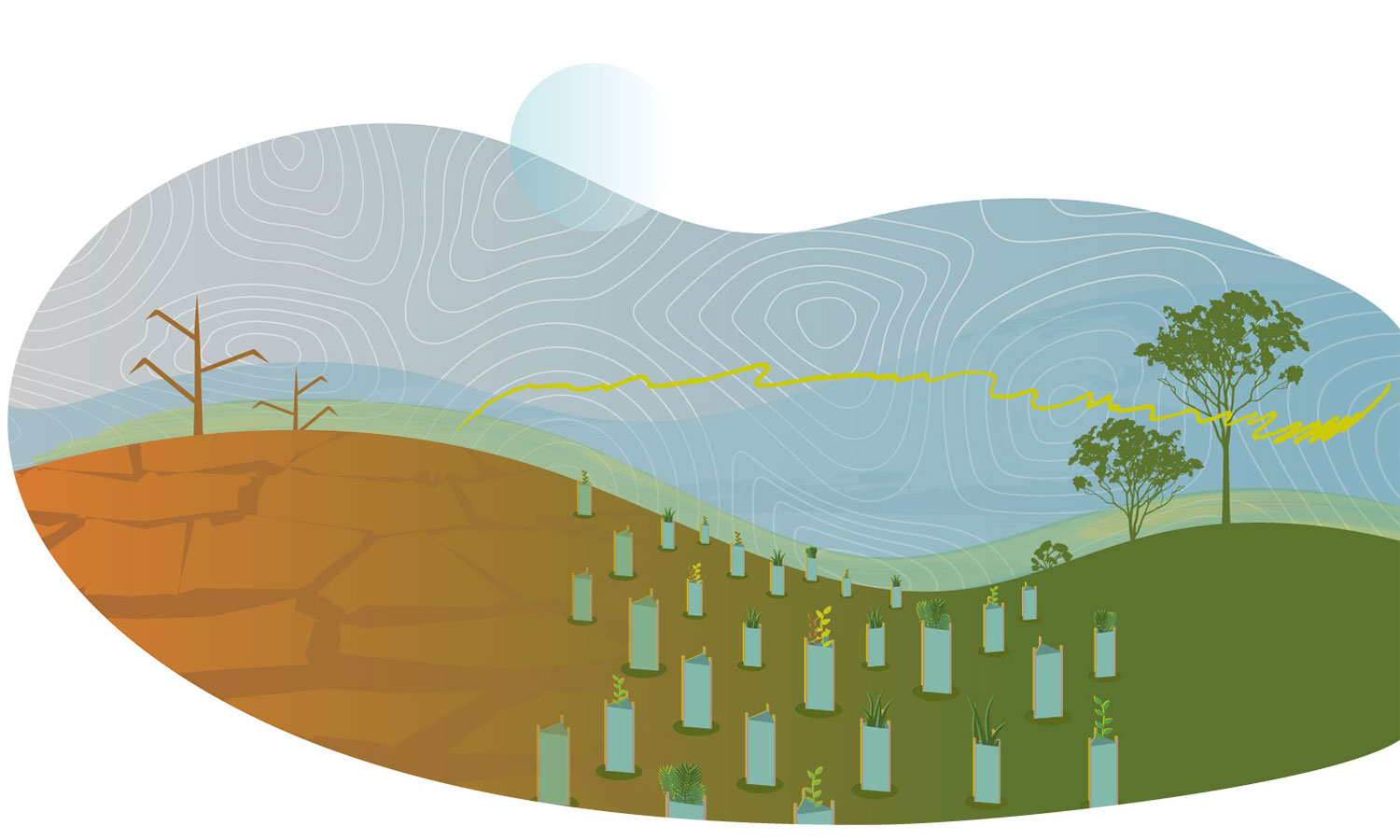Managing changing landscapes

This suite of projects provide resources to be used at the landscape scale to improve decision-making and future management. This research developed tools which identify priority places for protection, provide maps of climate refugia and guidance on climate-ready revegetation options to support resilient flora and fauna into the future.
These resources will allow researchers, scientists, policy makers and land managers to support the protection of NSW’s biodiversity communities from climate change.
Key resources include:
Identifying climate refugia for key species in New South Wales
This project identified climate refugia and assessed the potential for species to shift their distributions to track moving climate zones by considering barriers to movements, current land use patterns, landscape connectivity and health, connectivity with existing protected areas and species-specific list history traits. Maps are available on the refugia website, along with functions to search for species and generate reports for different regions.
Partners
Led by Linda Beaumont and John Baumgartner (Macquarie University), and James Brazill-Boast and Michael Drielsma (DPIE)
Contact
Climate-ready revegetation
This project provided practical advice to natural resource managers to incorporate the uncertainties of climate change into revegetation planning. A publication titled ‘Climate-ready revegetation: A guide for natural resource managers’ was developed that synthesises the tools available to support decision-making regarding restoration activities, and has been communicated to practitioners at workshops across NSW.
Partners
Led by Nola Hancock (Macquarie University)
Contact
Incorporating climate change into the Saving our Species Site-managed stream
In the Saving our Species program, threatened species that are classified as site-managed have a conservation plan developed for them that identifies sites for management, and appropriate management actions at those sites, to support their long-term persistence. This project developed a decision-support framework and tool for selecting sites for management of threatened species.
Partners
Led by Michelle Leishman (Macquarie University) and the Saving our Species team (DPIE)
Contact
Evaluating the status of the NSW terrestrial reserve system under a changing climate
Climate change jeopardises the capacity of the reserve system to maintain its CAR principles because it drives change in species ranges. This project evaluated the status and impact of a changing climate on the comprehensiveness, adequacy and representativeness (CAR) of the NSW terrestrial reserve system and identified priority areas for future reservation under climate change.
Partners
Led by Alana Grech, Victoria Graham, Linda Beaumont, John Baumgartner (Macquarie University), Murray Robinson (NPWS)
Contact
Best practice translocation guidelines for climate-change adaptation in NSW
The rapid pace of climate change is expected to increase the risks to species because many habitats will become increasingly unsuitable, and rates of migration to new habitats may be too slow and individuals may face insurmountable barriers. Translocation to new areas may be necessary to prevent either local or global extinction. The aim of this project was to provide a comprehensive overview of assisted colonisation for climate-change adaptation, along with advice on effectively translocating those species in NSW that might suffer population declines.
Partners
Led by Rachael Gallagher, Nola Hancock and Lesley Hughes (Macquarie University), Linda Bell, James Brazill-Boast (DPIE)
Outputs
This project has released two reports:
Assisted Colonisation as a Climate Change Adaptation Tool [PDF MB] by R V Gallagher, N Hancock, R O Makinson and T Hogbin; and
Monitoring and Prioritisation of Flora Translocations: A Survey of Opinions from Practitioners and Researchers [PDF MB] by N Hancock, R V Gallagher and R O Makinso
In September 2014, a masterclass was held to present the findings of this research. (Slides are available on the Centre for Green Cities website.)
Appendix 1 Compilation of established flora translocations in Australia
Appendix 2 Global case studies of experimental assisted colonisations
Appendix 3 Reviews of flora translocations
Appendix 4 Reviews of fauna translocations
Contact
How does an adaptation lens change the way we invest in landscapes for biodiversity?
Considering the ways in which landscapes are likely to change through time may change what outcomes are feasible to achieve, along with the mix, timing and location of activities that are targeted for investment. This project analysed the ability of existing decision processes to incorporate dynamic changes to threats and explored options to incorporate climate adaptation into future decision-making.
Partners
Led by Veronica Doerr, Stuart Whitten and Michael Dunlop (CSIRO)
Contact
